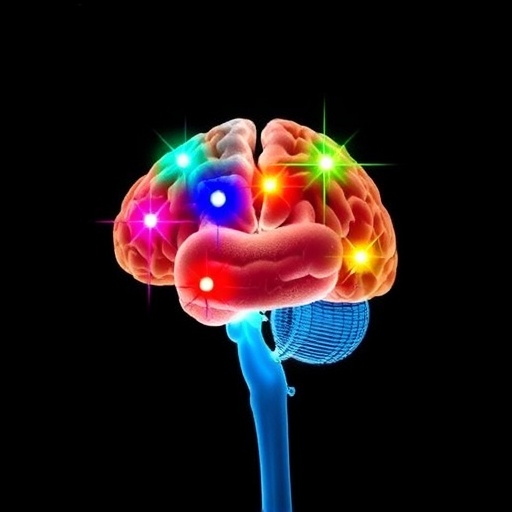In the intricate world of social dynamics, hierarchies are not merely human constructs; they manifest across various species, revealing deep-seated biological and neurological underpinnings. A riveting new study, published in iScience, delves into the neuronal foundations of social ranking in male mice, shedding light on how past experiences influence their dominance in competitive environments. Conducted by researchers affiliated with the Okinawa Institute of Science and Technology (OIST), this investigation aims to unravel the complex interplay between neurological circuits and social decisions.
Researchers embarked on their journey by employing dominance tube tests to observe the interactions within groups of male mice. In these tests, two mice are placed at opposite ends of a tube. The more dominant individual typically secures the right of way, establishing its social position. Over time and through repeated engagements, the researchers were able to chart the stable social hierarchies that emerge based on consistent results in these confrontations. This setup allowed the team to quantify dominance, mapping out the social ladder for each mouse within a colony, influenced by the outcomes of their earlier confrontations.
As the experiments unfolded, the researchers paired dominant and subordinate mice from various cages, facilitating direct competition between these groups. The ensuing competitions not only reinforced the established hierarchies but also provided a fascinating glimpse into the mechanics behind the so-called ‘winner’ and ‘loser’ effects paradox. In describing these phenomena, lead author Dr. Mao-Ting Hsu articulated how victorious mice continued to thrive in subsequent bouts, their dominance entrenched by their history of wins, while those who faced defeat demonstrated a marked decline in future assertiveness. This behavioral shift illustrates how intricate social dynamics can be heavily moderated by prior experiences—a reflection of a deeper neurological substrate at play.
The team’s quest for understanding took a scientific turn as they turned their attention to specific brain cells: cholinergic interneurons located in the dorsomedial striatum, an area of the brain implicated in reward processing and decision-making. Drawing from previous studies that established these cells’ roles in flexible behaviors and adaptability, the researchers sought to explore their influence on social hierarchy dynamics. This focus on cholinergic interneurons offered a novel angle on the intersection of social behavior and brain activity.
To critically assess the direct impact of these neurons on the social hierarchy, researchers conducted further experiments involving the selective removal of cholinergic interneurons in the mice. The outcomes were illuminating. The elimination of these neurons resulted in a profound disruption of what is termed the ‘loser effect.’ Unlike their counterparts, these modified mice did not exhibit a decline in dominance following defeat, suggesting a clear neural dichotomy in how winning and losing influences behavior. Surprisingly, the winner effect remained unaltered, indicating that distinct circuits manage these different social influences.
These findings hint at complex neurological processes at play in regulating not only competitive behaviors in mice but potential parallels in humans. As Dr. Hsu pointed out, while the societal structure is incomparably more intricate in human populations—where individual status can shift dramatically based on context—the similarities in our brain circuitry might reveal fundamental insights into social cognition across species. This interplay between experience and behavior underlines the importance of biological factors in shaping social interactions and hierarchies, particularly among social animals.
Understanding the neural basis of such dynamics could have widespread implications, extending beyond basic research into realms such as social psychology, animal behavior, and even mental health. The observation that the winner effect could align with reward-based learning suggests that motivational processes may underpin social engagement and competitiveness, paralleling human behaviors such as ambition and the drive for success in social and professional arenas.
While the present research is anchored in male mice, its findings could prompt broader inquiry into gender differences in social behavior and hierarchy formation across species. Future research may explore whether similar neurological mechanics apply to female mice or whether different circuits become involved in the context of competition and hierarchy. This aspect remains an open question, suggesting the necessity of diversified studies to enrich our understanding of gender-specific neurological responses in social contexts.
In summary, the work conducted by OIST’s research team not only sheds light on the specific neurological systems involved in social hierarchies but also raises pivotal questions regarding the application of this knowledge to human behavioral studies. Each competitive interaction between mice adds a layer to our understanding of social structures that could unfold into broader implications in the fields of neuroscience and social science. These revelations advocate a profound interrelationship between the biological and experiential avenues of social behavior, urging further exploration into what makes us social creatures.
The potential for translational insights from murine models to human psychology serves as a beacon for future endeavors in the biological exploration of social behavior, potentially informing therapeutic approaches and enhancing our grasp of social functioning across species. Paving the way for exciting research avenues, the meticulous examination of neurobiological underpinnings redefines our comprehension of social hierarchy and the factors that govern it.
Through rigorous experimentation and thoughtful analysis, the researchers at OIST have uncovered a fascinating facet of animal behavior that resonates broadly in the realm of social dynamics, suggesting that what we learn through the lens of neuroscience could illuminate the age-old enigma of human social interactions.
Subject of Research: Animals
Article Title: Cholinergic interneurons of the dorsomedial striatum mediate winner-loser effects on social hierarchy dynamics in male mice
News Publication Date: 16-Sep-2025
Web References: http://dx.doi.org/10.1016/j.isci.2025.113581
References: iScience Journal
Image Credits: Mao-Ting Hsu
Keywords
neuroscience, social hierarchy, cholinergic interneurons, winner-loser effects, behavioral psychology, dominance, murine models, social dynamics, OIST research, neurobiology, animal behavior, cognition




